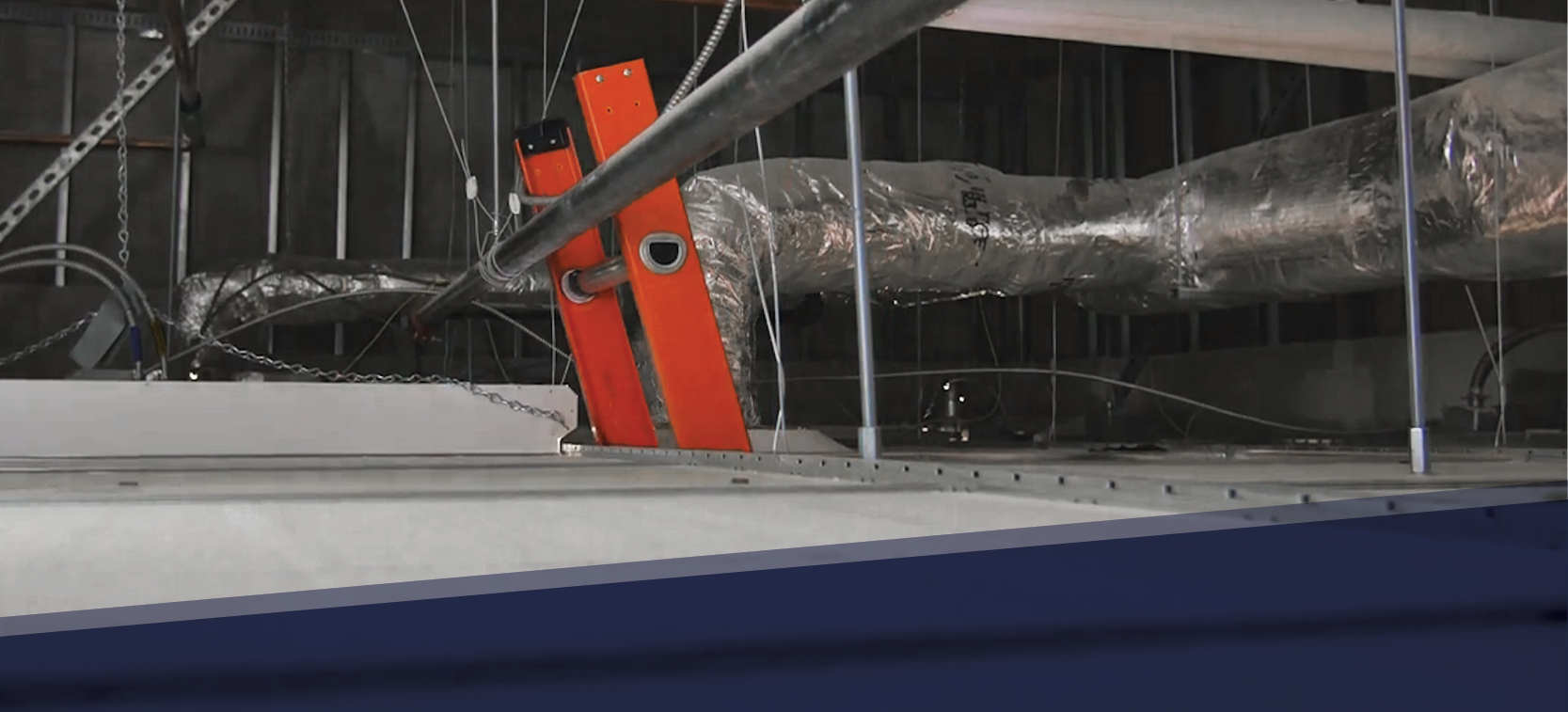Doing mechanical, electrical, and plumbing (MEP) work in ceilings can be painful – literally and figuratively. And the figurative sense increases in healthcare environments where regulations are very stringent, and for a good reason.
Increases in hospital acquired infections (HAIs) have led to an increased awareness of the importance of indoor air quality in hospitals which has led to new safety requirements across in both the US and Canada. Hospitals have also developed their own regulations, and these all filter down to contractors and subcontractors – MEPs included.
MEP work above the ceiling grid comes under scrutiny because harmful particulates, such as mold, dust, and Aspergillus, can get knocked down and circulate through the air, possibly harming immunocompromised patients. Something as simple as general maintenance to the lighting in the ceiling can pose a serious threat to patient safety. As a result, this routine task requires contractors to contain the area to ensure no harmful particulates escape.
So what can MEPs contractors do? ?
The go-to solution for containing ceiling work are mobile containment carts. There are several options to choose from, including soft-sided ones that are a great economical choice, however there are many benefits to choosing a hard-sided containment cart such as our AG5000 or AG8000.
Containment carts offer extendable tops that reach to the ceiling grids to seal off the space. Contractors can then create negative pressure within these units to prevent particles from escaping. With see-through walls, infection control specialists can maintain a clear line of sight to patients and emergency signals even when the units are in place.
What to look for in a containment cart ?
From decades of working in the industry, we’ve developed long-lasting relationships with industry experts and designed our units not just with current regulations in mind, but with an eye for long-term best practices. Here are a few things to look for in a mobile containment cart.
1. Hard-sided vs. soft-sided
Hard-sided units offer a host of benefits over soft-sided alternatives. First, they offer superior longevity and durability thanks to their more robust materials. Second, most people find them to be much more aesthetically pleasing. Finally, hard-sided units comply with a greater number of current hospital requirements. And if the current trends persist, we believe even more facilities will begin requiring hard-sided units.
2. Safety First
When we were first designing our carts, we knew the safety of the worker or contractor was equally as important as the safety to the patients. Contractors and facility maintenance staff working in the ceiling need to know they can safely do so from a ladder. Our AG8000 is a rugged and durable cart that is easy to use,and has built-in safety and performance features, such as a unique upper header designed to support a ladder at the ceiling height.
3. Transportability
Our latest design, the AG5000 was created based on feedback from many contractors that were looking for a cart that could easily fit in the back of a pick-up truck and could easily be stored after use. Role in the AG5000! This unit was designed with the perfect blend between transportability and durability. Compactable down to 20” in height, you’ll be able to easily set up, tear down, and transport this portable containment cart.
Discover the go-to solution for containing MEP activities in critical environments
Containing MEP activities in healthcare and other sensitive environments isn’t exactly an optional add-on. It’s a requirement. Abatement Technologies offers well-built, cost-effective solutions for working about the ceiling grid so that MEP contractors can meet the existing requirements.
If you want to learn more about our options at Abatement, you can check out the details in our online catalog or contact a sales rep for more information.



